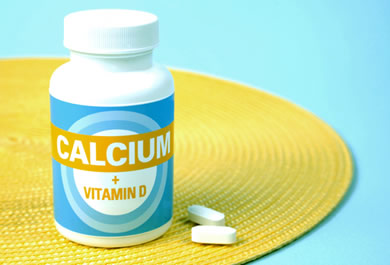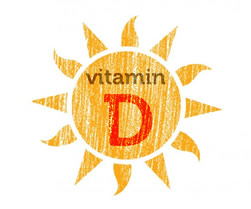We have all seen the television commercials where people are eating yogurt and congratulating each other on their weight loss. Naturally, we assume that these ads are only there to sell yogurt, and there’s certainly that element of this advertisement being undertaken. There’s many studies which have shown that it’s not necessarily the yogurt itself, but rather the vitamin D and calcium we find in it which can lend itself to tremendous bodily benefits. There has been a number of studies in the last few years that have shown these two minerals to be critical in sustained weight loss.
Calcium – More Than Just Stronger Bones
A recent 2010 study had researchers analyzing roughly 125 participants who were taking calcium and vitamin D regularly, and including participants who did not take either. This Dietary Intervention Randomized Controlled Trial tracked these patients over the course of roughly 6 months which identified significant benefits to those taking vitamin D daily in the weight loss department.
In yet another recent study it was found that regular calcium and Vitamin D consumption contributed not only to a reduction in fat, but also was highly selective for abdominal fat. This is certainly good, since this form of fat is directly linked to diabetes, many forms of cancer and heart disease.
 The participants in this study found after 16 weeks that they had significant reduction in abdominal fat in the groups that were taking fortified orange juice, one primarily fortified with both Calcium and Vitamin D. The authors noted that these two trials, once combined, resulted in “highly significant” certainty in the results between the two groups.
The participants in this study found after 16 weeks that they had significant reduction in abdominal fat in the groups that were taking fortified orange juice, one primarily fortified with both Calcium and Vitamin D. The authors noted that these two trials, once combined, resulted in “highly significant” certainty in the results between the two groups.
Certainly there’s many ways to get these two minerals in our diet, including natural sources such as milk and many fruits. However, fortification of many juices as well as yogurts are some of the most bioavailable choices possible. In addition to this, the regular intake of calcium and Vitamin D has been shown to increase fat oxidation, which is essential for breaking up any stored fat in our bodies and help that fat be used for energy rather than continue to be stored.
How Increasing your Calcium and Vitamin D Can Decrease Your Waist
Starting out on the HCG diet it’s fairly difficult to acquire calcium and Vitamin D at high levels as you cannot have milk or dairy products while in phase two. However, supplements and many fortified products can be used instead. These two minerals are often added to a lot of foods, and these can generally be eaten on the diet. Of course, vitamin D is found in many fruits, which are nearly all permitted on the HCG diet protocol. In phase three, including yogurt in your food choices, as well as various low-fat or no fat cheeses are great as well. Two servings will typically get you to the ideal level for these two minerals.
In addition to orange juice, which isn’t allowed on the HCG diet in phase two, many other non-dairy milks are allowed. Hemp, soy and almond milks typically are fairly high in fat, but they all have fortified options. There are choices out there that are not particularly high in calories which can be added to your diet in moderation to added these essential vitamins into your diet. There are many vegetables which also have these minerals naturally as well. Collard greens, bok choy, kale, turnip greens and broccoli all are high in calcium and vitamin D. Adding these vegetables to your phase two protocol plan can definitely improve results.
There are also readily available over the counter supplements at most grocery stores and pharmacies as well. These are direct channels for you to capitalize on these benefits without needing to control your vitamin intake directly through vegetables an food. Generally, the recommended dosage for calcium is 1000 mg per day, for men 18-70 years of age and 1200 mg for those over 70. Similarly for women ages 18-50, 1000 mg per day is recommended and 1200 mg for those 51 and older.
There’s also vitamin D supplements which are regularly available. The recommended dosage is 600 IUs per day for those under 70 years of age, and 800 IUs for those over 70 years of age. The maximum recommended by the National Academy of Sciences is 2000 IUs per day.
